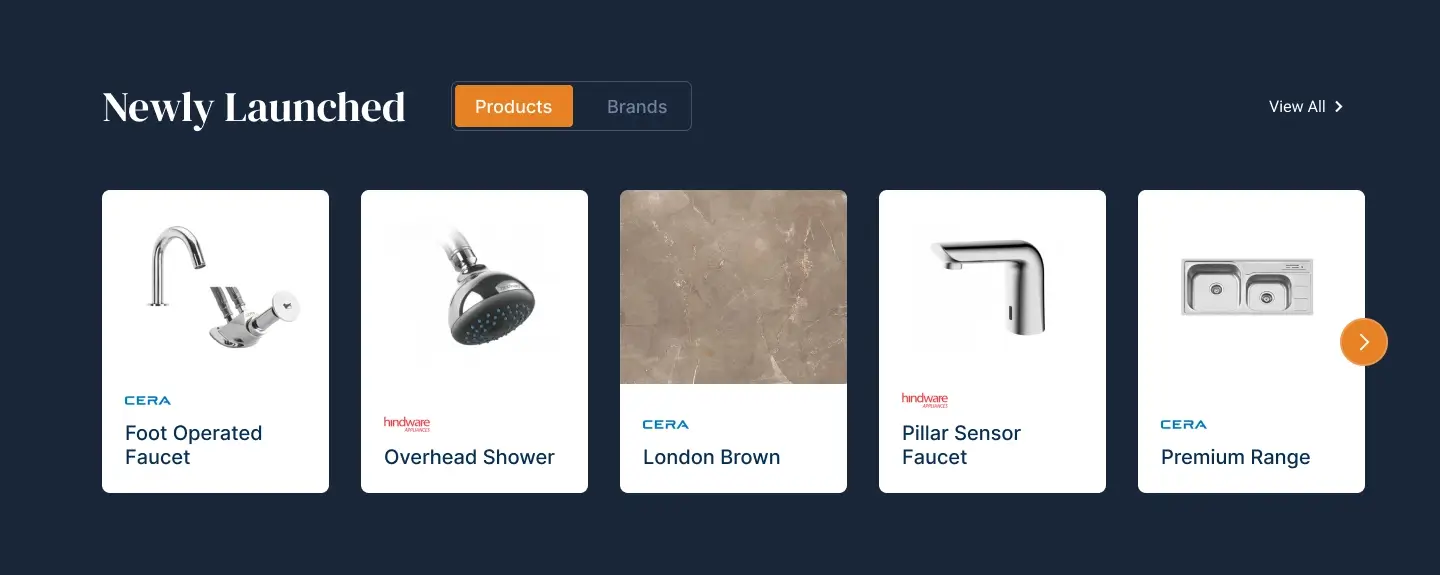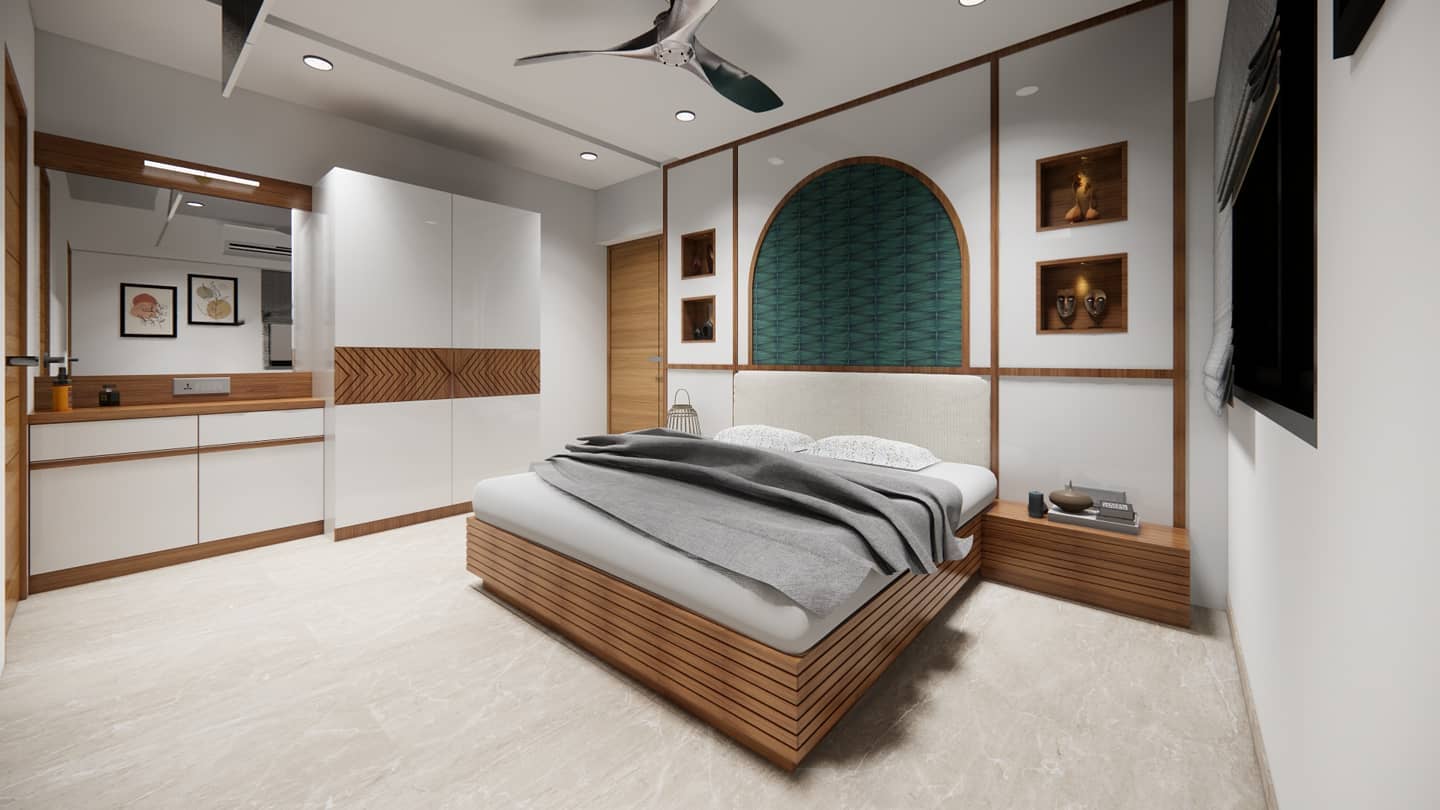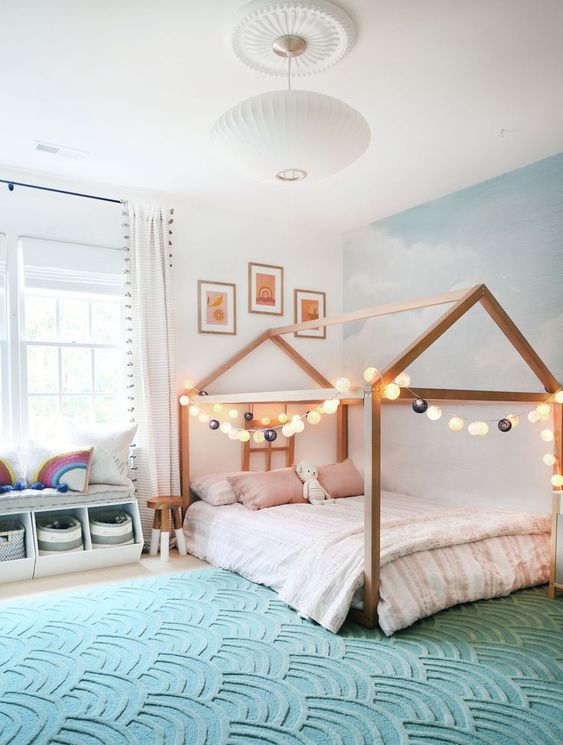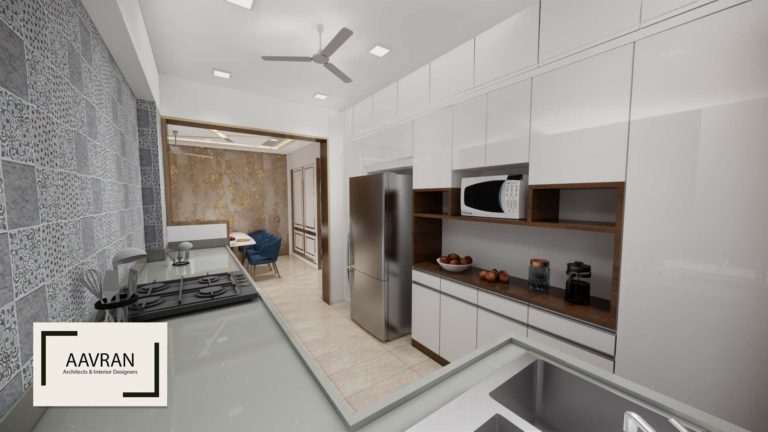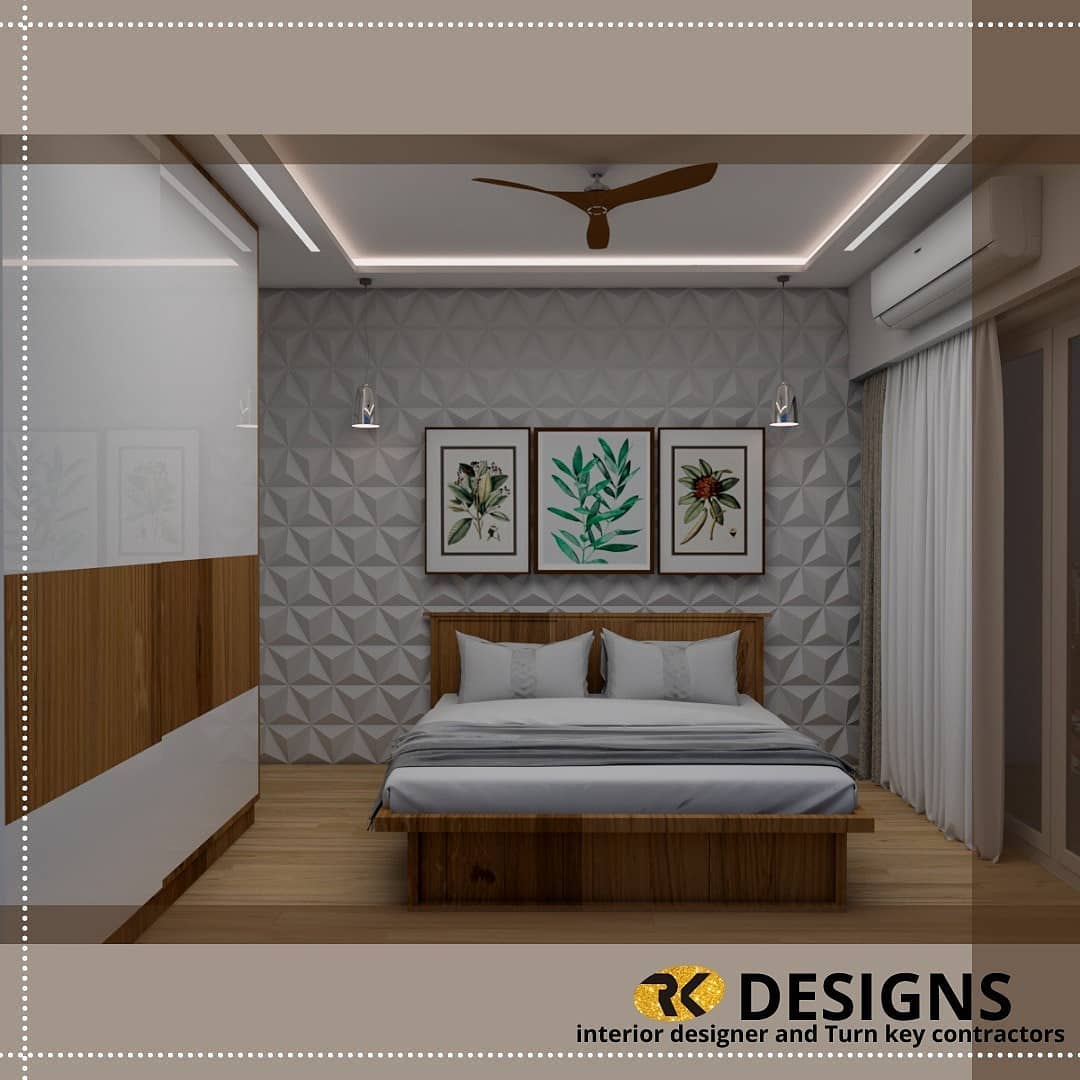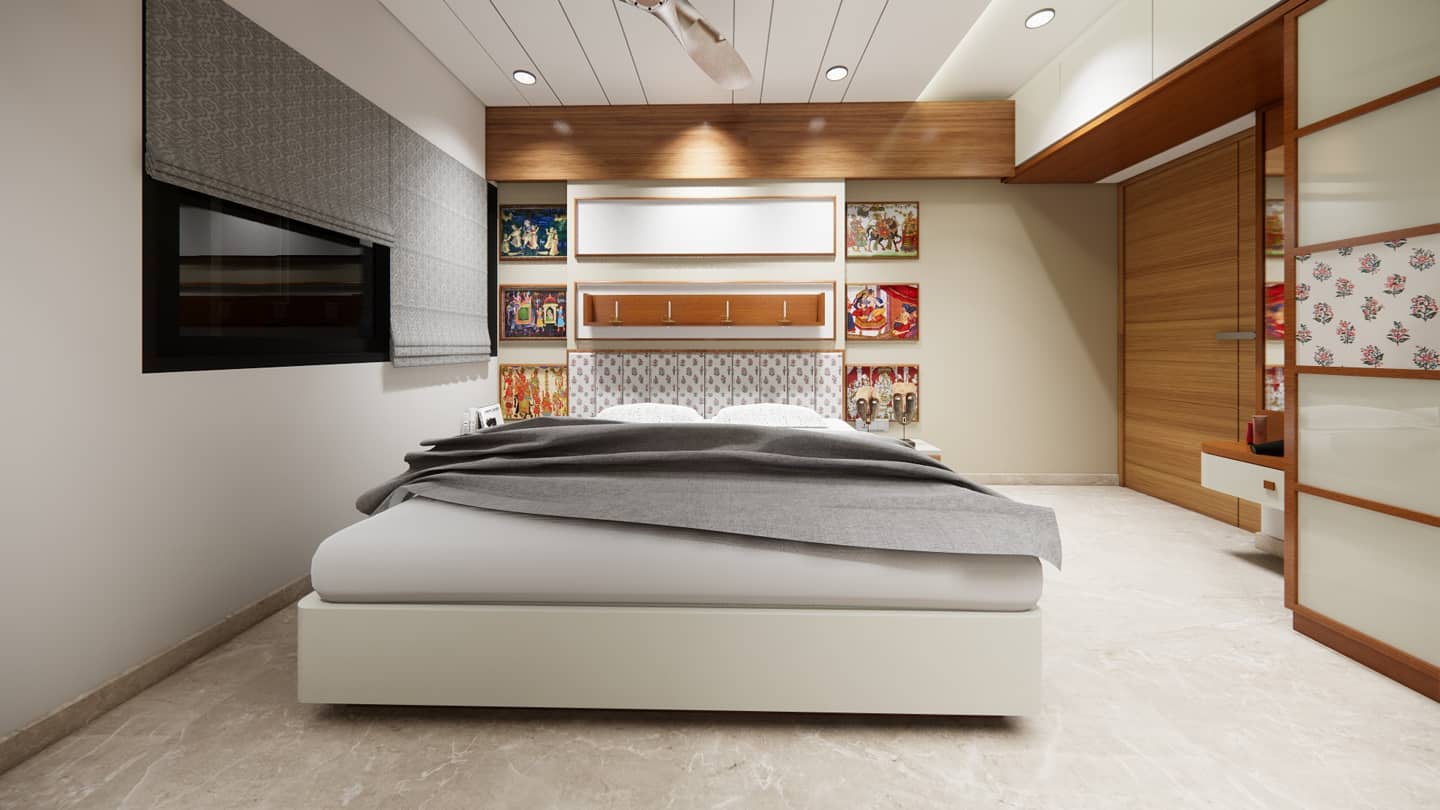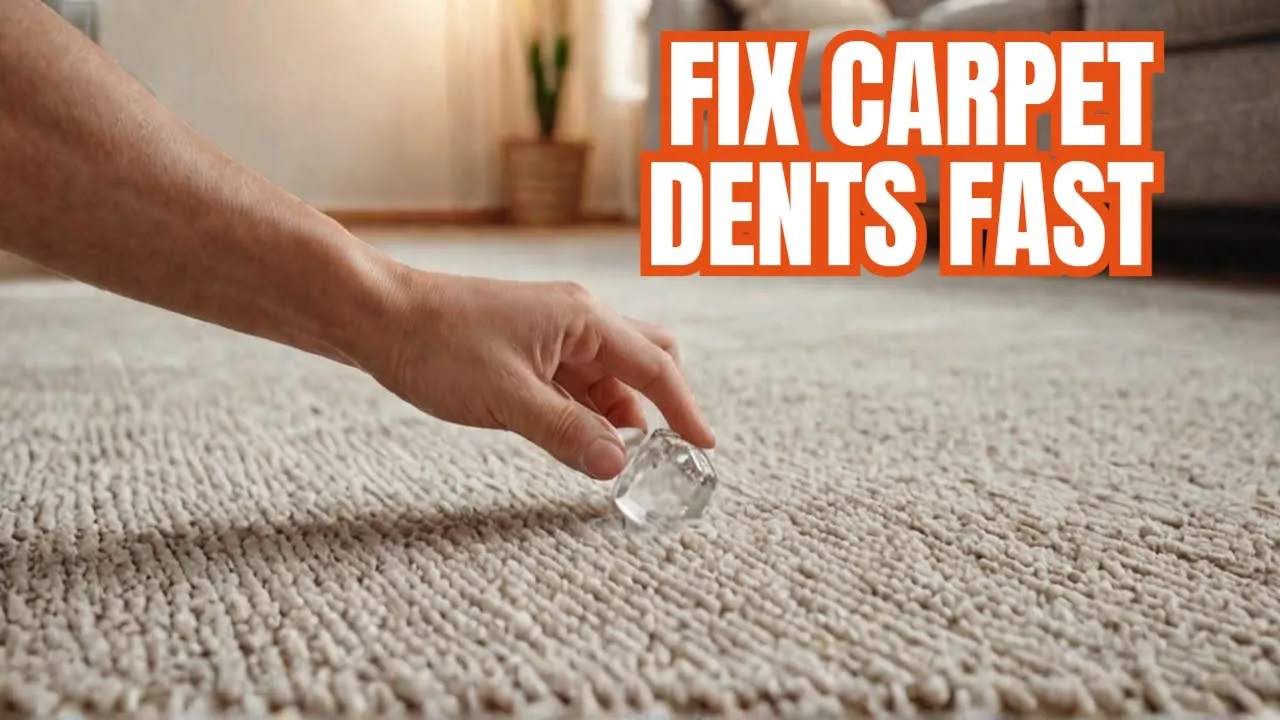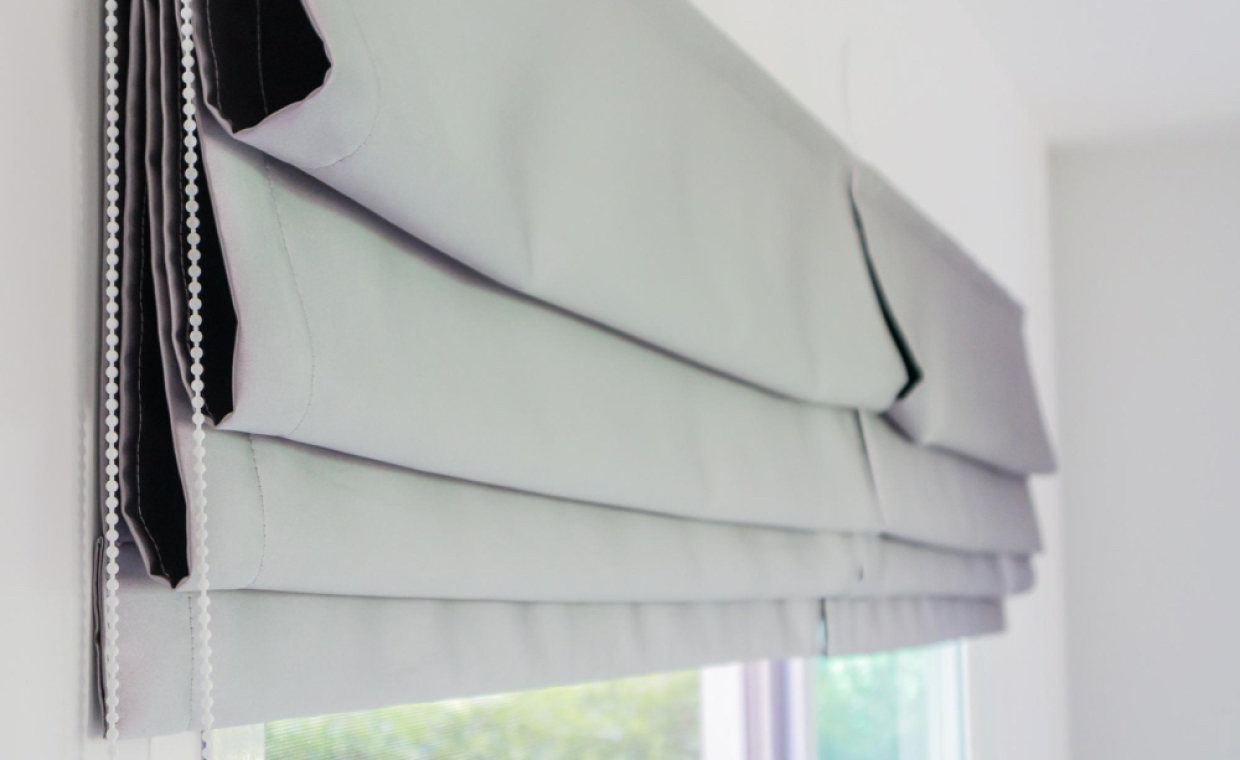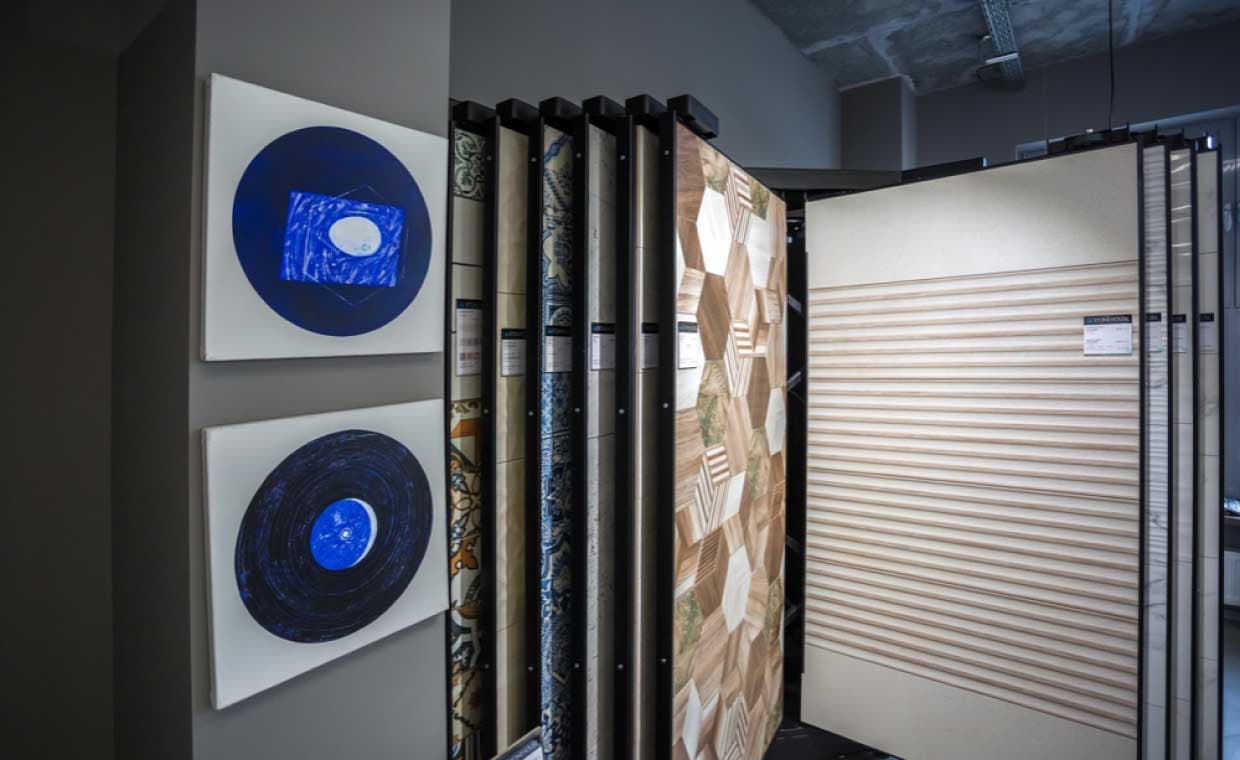
Table of Contents
Are you planning an interior transformation or renovation? Consider incorporating tiling work—nothing transforms a space quite like captivating tiling designs. Whether you are revamping your living room, remodeling your kitchen, or upgrading your bathroom, the right choice of tiles can redefine the aesthetic of your home. From the timeless elegance of marble floor tiles to the sleek charm of porcelain tile options, the world of tiles offers endless creative possibilities that blend function with style. In this blog, Gharpedia explores how to use various tile options creatively to transform your interiors.
Types of Floor Tiles
1. Marble Floor Tiles

Marble tiles are not limited to only flooring—they can also be used on walls. However, they are best suited for floors. Marble floor tiles exude sophistication and a sense of calm. Since marble is a permeable material, regular upkeep is essential.
2. Limestone Tiles

Limestones are ideal for bathroom flooring due to their light hue and smooth texture. However, it requires regular sealing. Bathroom tile designs featuring limestone add a luxurious touch to your bathroom.
3. Granite Tiles

Granite is another type of natural stone that can be used for flooring, thanks to its naturally occurring grains and sparkling colour. Its hardness makes it more resistant to damage than marble. However, granite is typically available only in large slabs. It is a good flooring option for bathrooms, as it is water-resistant.
Also Read: A Slippery Affair: How to Make Your Granite Stairs Slip-Resistant
4. Ceramic Tiles

Ceramic tile is a versatile and popular choice for home renovation projects as it can be used in a variety of spaces.
The bathroom, kitchen, and entryway are just a few areas where ceramic’s affordability and durability make it a top pick. Glazed ceramic tiles are more resistant to stains and damage than unglazed ceramic, carpet, or vinyl plank flooring.
However, when selecting ceramic tile designs for the flooring, make sure they are slip-resistant. Decorative ceramic tiles are both aesthetically pleasing and practical flooring material since they resist water and do not harbour germs or unpleasant odours.
Also Read: Things to Keep in Mind while Buying Ceramic Tiles
5. Porcelain Tiles

The low maintenance and versatility of porcelain tiles make them an ideal choice for any room in the house. While they outperform ceramic tiles in stain resistance, they are not as durable and can become dangerously slippery when wet. Porcelain tile options come in a wide range of colours, textures, and finishes—making them well-suited for both modern and traditional interiors.
6. Vinyl Tiles

Bathroom vinyl tiles are more cost-effective than alternatives like marble due to their low cost per square foot, making them ideal for any restroom. Additionally, these tiles offer excellent stability, comfort, and durability, making them a superior choice. Their aesthetic appeal and ease of installation further enhance their overall value.
Also Read: 6 Reasons Hybrid Vinyl Flooring Is Gaining Popularity
7. Vitrified Tiles

This flooring material absorbs minimal moisture, making it ideal for areas prone to dampness. Vitrified tiles are durable and can withstand wear and tear over time with minimal damage. These come in various styles, thicknesses, and colours. Popular types include glazed vitrified tiles, porcelain vitrified tiles, and double-charge vitrified tiles.
Also Read: Various Types of Vitrified Tiles Options for Your Home Flooring!
8. Matte Tiles

These tiles have a matte finish, similar to those made from cement, stone, or wood, and they don’t draw much attention. If you prefer a low-key flooring design, this is an excellent choice. Additionally, matte tiles do not show watermarks as easily as glossier options.
9. Laminate Tiles

Laminate tiles are an affordable and stylish flooring solution that mimic the appearance of natural materials like wood, stone, or ceramic. These are available in a wide range of finishes and patterns, making them a versatile option. Laminates are ideal floor material for kids’ rooms, living rooms, bedrooms, and sometimes even kitchen floors.
Also Read: Check-out Laminate Flooring Pros and Cons for Home Upgradation
Types of Wall Tiles
1. Glass Tiles

Glass tiles offer the highest stain resistance among tile types. Even substances like red wine or lemon juice won’t leave a mark. Despite their many benefits, glass tiles are best suited for walls and not for flooring, as they can easily be damaged by heavy objects.
2. Ceramic Tiles
Ceramic tiles are highly versatile and can be used on both interior and exterior walls. Indoors, decorative ceramic tiles can create stunning tiling designs that dramatically enhance a room’s appearance. On exterior walls, ceramic tiles help keep interiors cooler during the summer and act as a moisture barrier during the rainy season.
3. Ceiling Tiles
Ceiling tiles, commonly referred to as ceiling panels, are lightweight building materials used to cover ceilings.
These panels have a flat surface and lightweight structure that slightly lower the height of a room. Often covered with fireproof, soundproof, and heat-insulating materials, they serve both protective and decorative purposes. Their versatility makes them a popular choice in commercial settings such as shops, workplaces, hotels, and hospitals.
Outdoor Tile Options
1. Porcelain Tiles
Because of its density and sturdiness, porcelain tile is a popular material for outdoor applications.
Porcelain tile, planks, or wood-like tiles are excellent choices for balcony flooring. The inherent warmth of wood, combined with its insulating properties, makes it a great flooring material. Alternatively, you can opt for porcelain tiles with a matte finish for a sleek and modern look.
2. Slate Tiles

The natural surface texture of slate tiles enhances their strength and durability. This built-in roughness means you don’t need to make additional modifications to achieve a slip-resistant floor design that is perfect for outdoor use.
3. Concrete Tiles

Concrete tiles are a great way to achieve the look of natural stone for your outdoor flooring— without the hefty price tag. With a relatively small investment, you can give your home a luxurious appearance. Thanks to their durability, concrete tiles are ideal for high-traffic areas and outdoor settings. However, the sealant should be reapplied every few years to maintain its performance and appearance.
4. Soapstone Tiles

Courtesy - M Teixeira Soapstone
Like other types of natural stone, soapstone is completely non-porous and has a silky, smooth texture. This makes it highly resistant to stains and water. Not only can it withstand high temperatures, but it also endures extreme cold, making soapstone tile designs suitable for a wide range of climates.
Kitchen Backsplash Tiles
1. Porcelain/Ceramic Tiles
When it comes to kitchen backsplashes, ceramic (or porcelain) tiles are by far the most common and popular choice due to their durability and affordability compared to other options. They are often available in sizes that complement the relatively large floor tiles used in kitchens.
2. Glass Tiles
Glass tiles have recently become a trendy choice for kitchen black splashes. They are easy to maintain and add a modern, visually appealing touch to the space. However, keep in mind that glass tiles typically have a high-gloss finish, which can make stains or imperfections more noticeable than with other materials.
3. Natural Stone (marble, slate, travertine, etc.)
Unlike harder porcelain or ceramic tiles, natural stone tiles are porous and can stain easily. Therefore, it’s important to properly seal them before use as a kitchen backsplash.
You should reseal your backsplash once a year if your kitchen is used heavily or cleaned frequently. Keep in mind that natural stone requires more upkeep, especially if you entertain guests often.
Here are ten trendy ideas for you to consider for your kitchen backsplash:
Tile Pattern & Styles
1. Mosaic Tiles

A mosaic is a form of art created by assembling small pieces of material to produce a larger, cohesive design.
Mosaic tiling designs enhance the aesthetic worth of your home or business. These mosaics can represent scenes, ideas, and concepts, offering striking visual appeal, rich details, and expressive, contemporary charm.
Mosaic floor tiles are a great option if you want to give your home a more personalised look than what standard tiles offer. They can also be creatively used to make beautiful indoor floral patterns or decorative arrangements.
Also Read: What to Consider Before Choosing Mosaic Bathroom Tiles?
2. Hexagonal Tiles

Hexagonal patterns improve a room’s aesthetic without overwhelming the space. This timeless tile shape has long been favoured for both exterior and interior applications.
Whether in modern or traditional interiors, hexagon tiles are a versatile and enduring choice. As a basic geometric form, the hexagon lends itself well to creative and stylish home design.
3. Wooden Look Tile Designs

Floor tiles that mimic the appearance of wood or carpet are a stylish choice for living rooms. A variety of patterns is available, from bold and eye-catching to subtle and elegant.
You can choose from a range of materials, including porcelain, ceramic, stone, marble, travertine, granite, quartzite, etc. depending on the look and durability you desire.
4. Patchwork

Patchwork tile designs are taking the design world by storm, with high-end publications and interior decorators embracing their vibrant mix of colours and patterns.
Their patterns and vibrant colours make them compatible with any design or décor elements, and hence, incorporating patchwork tile patterns into your home or workplace is easy.
5. Carpet Tiles

Courtesy - Indiamart
The most common types of carpet tile backing are hardback, open-cell cushion, and closed-cell cushion.
Carpet tiles usually come with pre-attached backing, allowing them to be installed directly onto the floor without additional preparations.
6. Fish Scale Tiles

Courtesy - Atlas Ceramics
These tiles, which resemble fish scales (also called fan tiles, scallop tiles, or mermaid tiles), lend a touch of elegance to any building, whether a home or commercial space.
Perfect for highlighting areas like backsplashes, fireplaces, showers, or bathroom walls, these tiles offer a striking visual appeal. The style originated during the Art Deco period in the 1920s and remains popular on floors and walls across the globe.
7. Brick Tiles
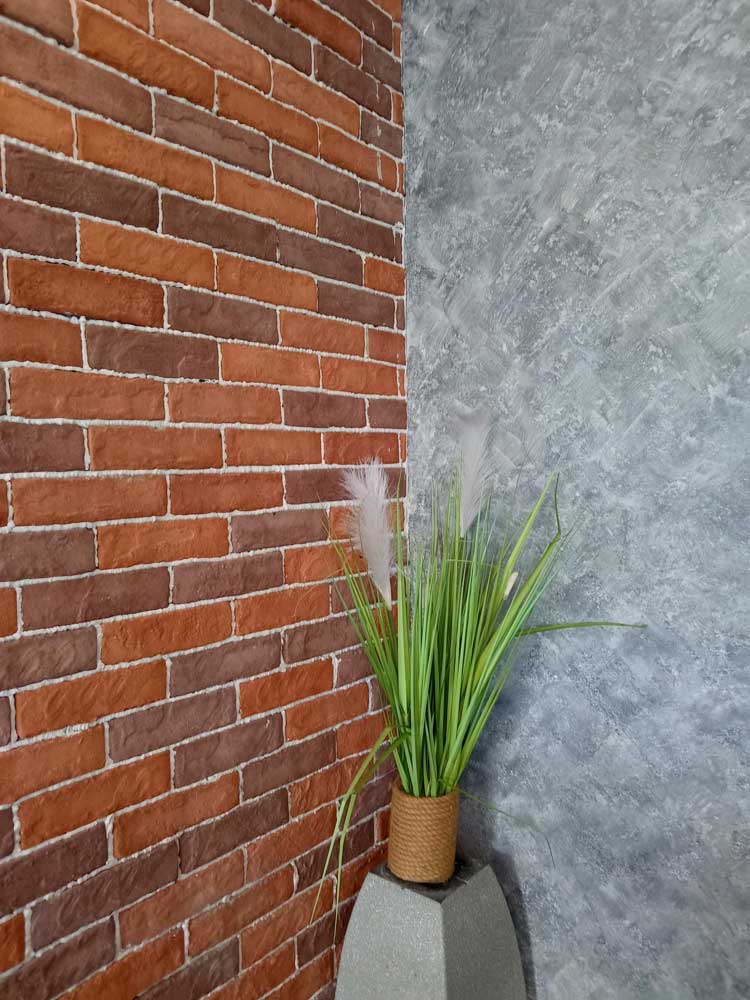
Brick tiles, often referred to as “brick slips,” come in two primary varieties: premade and standard. Available in a wide range of colours and designs, brick wall tiles include everything from rustic, tumbled finishes to sleek and modern designs. Their versatility makes them suitable for both classic and contemporary interiors.
Final Thoughts!
For thousands of years, tile has been a go-to material in construction. Given how eco-friendly ceramic and porcelain tile products are, they have become a top choice in green architecture.
Ceramic and porcelain tiles are among the most durable flooring options available. With proper installation, tile floors can last a lifetime, unlike vinyl or laminate flooring, which tends to wear out over time.
Maintaining tile is easy. Most of the time, all you need is warm water and a mop, making it a low-maintenance alternative to other high-upkeep materials.
Also Read:
Popular Tiling Patterns To Elevate Your Space
Things to Keep in mind while doing Tiling Work at Home!
How to Choose Tile Colour According to Your Room Colour Scheme?
FAQs
1. What is the most popular tile pattern?
Popular tile layouts include the classic herringbone pattern. Chevron, horizontal and vertical brick bond, hexagon, modular, and basket weave designs are popular for walls and floors.
2. What are the 6 main types of tiles?
The six most common types of tiles are ceramic, porcelain, glass, marble, granite, and other natural stone tiles.
3. What is the easiest tile pattern to lay?
The straight lay pattern is the simplest and most common tile layout. To create a uniform grid, the tiles are simply put parallel to one another.
4. How do you plan a tile layout?
Square patterns are the basic guideline of tile arrangement. Begin by snapping a few chalk lines to identify the center point of the room. Make a four-pointed star out of the centre feet. Then, measure three feet from the center and draw another chalk line. Use this line to create an arc, helping you plan tile placement more accurately.
Author Bio
Saili Sawantt – She is an Architect and Interior Designer by profession. Writing is what she treats as her passion. She has worked as an Architectural Writer, Editor, and Journalist for various design as well as digital portals, both national and international. Formerly she has also worked with Godrej Properties Limited (GPL) Design Studio, Mumbai, due to her keen interested in learning about Sustainability and Green buildings. Apart from this, she runs her blog ‘The Reader’s Express’ and is a practicing Architect & Interior Designer.





